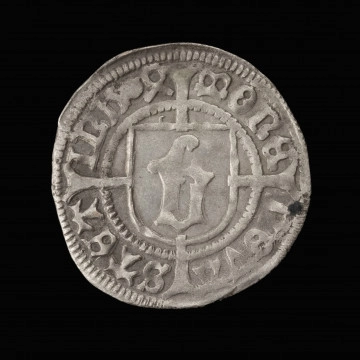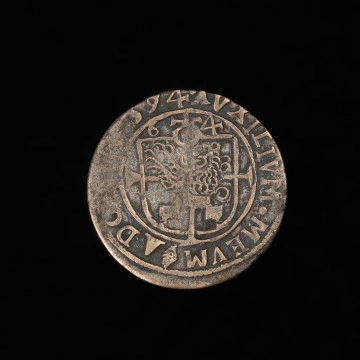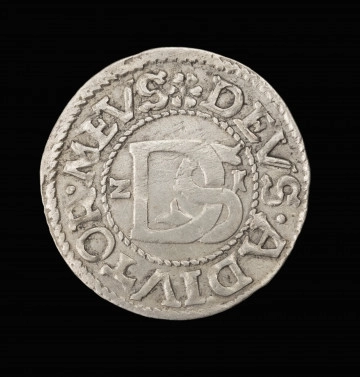
Witten
1504
National Museum in Szczecin
Part of the collection: Pomeranian coins
John Frederick (1542-1600) re-established mint activity in the Pomeranian state after a halt of more than half a century. A shortage of a bullion depot and financial resources led the ruler to seek permission from the Emperor to use copper for coinage. Thanks to the privilege obtained in 1581 he commenced the issue of copper pfennige, the so-called sherfs. Initially, John Frederick minted the coins together with his brother Ernest Louis, since according to the monetary law of the German Reich, only the mint in Szczecin could operate in the Pomeranian duchies. In 1584, however, Ernest Louis started his own illegal minting business in Wolgast. The images on the Szczecin duke's sherfs are of an entirely secular nature. The abbreviated titulature of John Friedrich symbolised the ruler on the obverse, and the griffin on the reverse symbolised the state. The dies for the issue, from which the presented specimen comes, were made by goldsmith Gregor Westpfahl, employed at the Szczecin mint as Münzmeister. Despite the absence of a signature, the style in sculpting the griffin made his work recognisable. The sherfs were produced using a roller press, which is why many pieces have minting defects such as letter and mark offsets. Estimates suggest that around 4 million sherfs left the Szczecin mint alone, far exceeding the emperor's limit of 6,000 guldens in pfennige. The introduction of sherfs into circulation was done under duress, and the exchange of a portion of silver and gold for copper was compulsory. The minting of copper coins was an expression of the country's economic weakness and led to a loss of trust in money and the power of the dukes. Genowefa Horoszko
Other names
Pfennig
Author / creator
Object type
coin
Technique
coining
Material
copper
Origin / acquisition method
acquisition
Creation time / dating
Creation / finding place
Owner
Muzeum Narodowe w Szczecinie
Identification number
Location / status

1504
National Museum in Szczecin

1594
National Museum in Szczecin

1621
National Museum in Szczecin
DISCOVER this TOPIC
National Museum in Szczecin
DISCOVER this PATH
Educational path